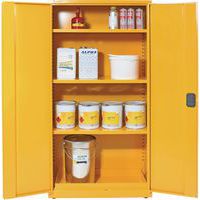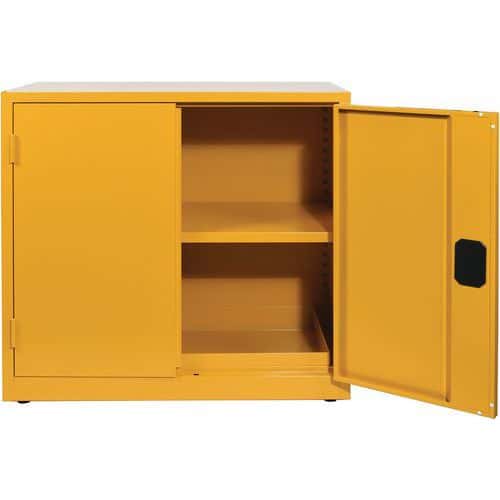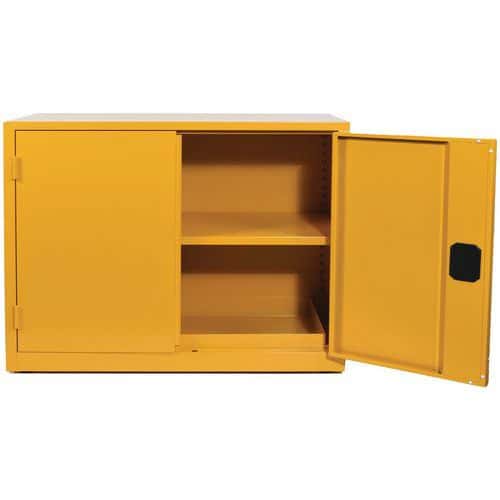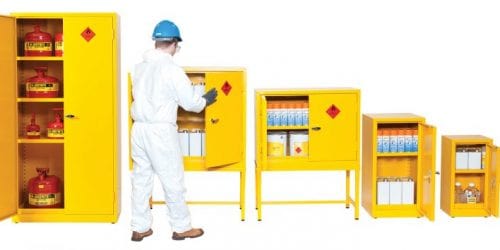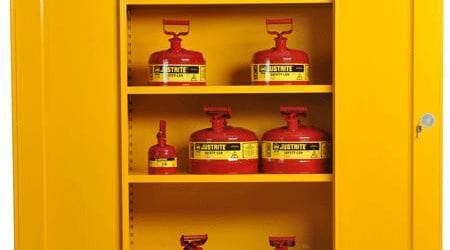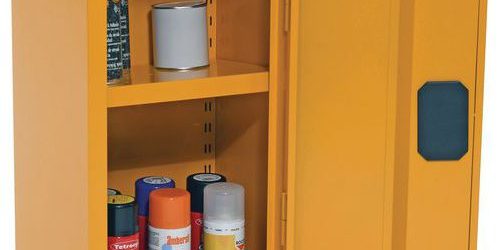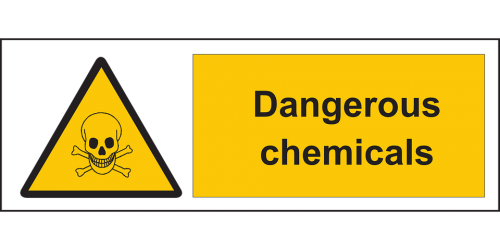What is COSHH? A Step by Step to COSHH Assessments
What does COSHH stand for?
COSHH stands for the Control of Substances Hazardous to Health. It is the set of guidelines first introduced in 1988, outlined by the HSE to ensure any business using hazardous substances, does so in a controlled and safe way. This aims to reduce accidents and risks to the health of employees in the workplace.
All businesses, even those individuals who are self-employed must take the necessary steps to protect themselves.
COSHH applies to all industries using harmful substances and this can include catering, baking, beauty and hairdressing, cleaning, agriculture, engineering, motor vehicle repair and so on.
This guide will cover the following 8 Steps of COSHH:
- COSHH Risk Assessment
- Precautions
- Prevent or control exposure
- Maintenance of control measures
- Monitor exposure
- Health surveillance
- Plans & procedures for accidents and emergencies
- Training for employees
Additional Resources
- COSHH Symbols Guide on how to store different chemicals.
Why do I need COSHH?
The purpose of COSHH is to protect the well-being of your employees, which is required by law.
It guides you through evaluating the risks in your business, to how you can best control or prevent them. Health monitoring and assessment of procedures and equipment should be undertaken regularly to ensure you uphold your compliance with COSHH.
Most businesses will work with some substances which pose a health risk, even products such as mild cleaning agents can be hazardous to employees if not used correctly.
Step 1. COSHH Risk Assessment
The risk assessment aims to identify all harmful substances that can damage health and the tasks where there is exposure to these materials.

Identify who should carry out your assessment
Employers may carry out the assessment themselves or delegate to a member of staff who has the knowledge and experience.
This could include qualifications, practical experience of the circumstances, and any training in occupational hygiene. Be mindful that how extensive their abilities need to be, will depend on the individual risk or situation.
If you don’t have the necessary skills in-house, enlist the help of expertise from outside your business.
Your risk assessment will need to include:
- Identifying and listing all hazardous substances in the workplace – they may not always be labelled as harmful
- Evaluating the implications to the health of each substance
- Assessing who may be affected and how
- Don’t forget to think about contractors or anyone else who could be exposed.
- Exposure routes include – breathing in dust, gas, or mist, by skin contact, or by swallowing
- Record all your findings
Risk Assessment Helpful documents
- Tips on how to assess harmful substances
You do not necessarily need a qualification to carry out a risk assessment, however, the basic skills required are outlined here by the HSE.
For detailed information on how to write a COSHH risk assessment view the following guidelines.
Step 2. Precautions
If you identify risks from your initial assessment, you should review precautions you can take to remove the risk or whether it’s possible to change internal processes.
Ask yourself:
- Can we use an alternative?
- Can we change our process to eliminate hazardous substances?
- What control measures do we already have in place & do they work?
You should compare any control measures you have already with the following:
- HSE COSHH guidelines
- Substance substitution
- Workplace exposure limits (WELs)
- Check with your chemical supplier/manufacturer for advice on storage and handling
Think about the necessary precautions you need to take to protect your employees. If you can’t eliminate the hazard, controlling exposure is crucial.
Step 3. Prevention or Adequate Control of Exposure
If you can’t eliminate the risk, control measures should be put in place for each risk-based activity you identified in your assessment.
Here are some examples of what you need to think about when putting these measures in place.
- What processes, systems, or engineering controls can you use that minimise the amount of hazardous material used or produced?
- What equipment can you use that completely isolates the hazard?
- How can you control the exposure at the source? Can you implement a ventilation system that extracts fumes?
- Establish how the substance should be stored. Does it need to be segregated, kept in a locked cabinet, or at a particular temperature?
- How could the substance be absorbed? What personal protective equipment do you need? This should be used in conjunction with other safety methods and not as a replacement.
Helpful Documents
- Chemical Segregation
- Storing hazardous substances in the workplace
Your control measures will depend entirely on the hazard itself. Adequate control under COSHH means:
- Apply the 8 principles of COSHH
- Do not exceed the WEL (workplace exposure limit)
- If the substance causes cancer, heritable damage, or asthma, reduce exposure to as low as reasonably possible.
Page 29 of the HSE guide provides details on adequate control including how to use, store, label and dispose of dangerous substances. Available to download here.
Step 4. Maintenance of Control Measures
COSHH requires that you maintain your controls so they perform to the standard in which they did when they were initially introduced. You will need to:
- Train employees on how to use control measures
- Ensure they are aware of how to report problems
- Regularly check procedures and equipment
This will involve making sure any protective clothing, equipment, or systems are regularly tested and performed to the original standard.[wpanchor id=”#monitorexposure”]
You must retain your records of all tests and examinations carried out for at least 5 years.
Step 5. Monitoring exposure
To comply with COSHH you need to measure the concentration of hazardous substances in the air which could be breathed in by workers, where your risk assessment has concluded that:
- Exposure limits may be surpassed
- Control measures aren’t working properly
- There is a serious risk to health if control measures fail
Before monitoring, you should be familiar with the exposure limits. A WEL (workplace exposure limit) is the maximum concentration of an airborne substance over a specified period, to which a person can be exposed.
There are 2 forms of monitoring airborne substances:
- Personal monitoring – this establishes the concentration of an airborne substance within an employee’s breathing zone. The sample should be taken from the breathing zone around the employee’s face.
- Fixed place monitoring- can be at the source of emission, or another area of the workplace away from the hazard – this can help determine if your control measures are effective.
You need to keep and maintain any records of exposure monitoring you carry out and allow employees access to their records.
For detailed information on monitoring strategies of harmful substances, review the HSE guide to monitoring toxic substances.
Step 6. Health Surveillance
After taking the steps outlined above, it will be apparent where some risk remains. If the risk remains where:
- An employee is exposed to one of the substances listed in medical surveillance schedule 6 (page 92).
- An employee is exposed to a substance linked to a disease, and it is likely, due to work conditions that this disease could occur.
Health surveillance should be a regularly planned assessment and health records need to be kept for at least 40 years.
The surveillance may involve:
- Examining an employee’s skin for conditions such as dermatitis
- Assessing their breathing, where work may involve substances causing asthma
- A health assessment to identify any disease that could appear when using a particular substance.
Assessments should be carried out by an occupational health service physician or GP who is competent in occupational medicine.
The HSE provides various guidelines on surveillance for different circumstances.
Step 7. Creating Plans and Procedures
In the event of an accident or emergency, you need to have the necessary processes in place to handle such a situation. This involves planning for an emergency whereby the exposure to dangerous substances goes far beyond day-to-day contact.
You will need to:
- Plan and set up warning and communication systems
- Ensure all information is available to those who should be aware – this may include emergency services.
- Practice safety drills with all staff regularly
- Have a plan in place that outlines the steps involved to reduce the harmful effects, restore the situation to normal, and inform employees who are affected.
- Ensure you have the necessary safety equipment.
The above must be complied with in full where carcinogens, mutagens or biological agents are used.
Step 8. COSHH Training
All employees need to be properly trained and provided with the relevant instructions. You are responsible for ensuring they are fully trained on the following:
- Access to safety datasheets
- The names of the substances they work with and the risks to health
- The findings of your risk assessment
- Precautions they need to take to protect themselves and others
- How to properly use the PPE clothing they’re supplied with
- Results of exposure monitoring and health surveillance
- Fully understanding control measures and how to report faults
- Emergency procedures
This information and employee training should be reviewed and updated when necessary.
If any changes occur to the type of work, method, or substance used, you will need to undergo the steps outlined in this guide; then the relevant documentation and training should be updated.
If you would like advice on training for employees, please review the details on the HSE website here.
COSHH Cabinets
COSHH stands for the Control of Substances Hazardous to Health. They’re a set of guidelines to ensure businesses store and handle chemicals in a safe way. COSHH cabinets make sure chemicals are stored securely in clearly labelled, lockable cupboards.

